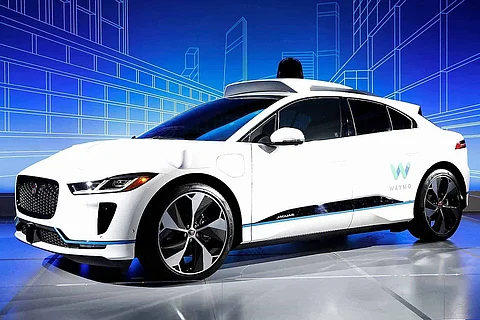

Autonomous vehicles are advancing from cutting-edge dreams to current reality, and as the innovation develops, personal and public transportation will be forever changed. In the long run, driverless vehicles will remove human drivers from the condition, banishing drowsy, weakened, and distracted drivers from the streets. Almost 40,000 individuals in the United States passed away on the streets in 2017, and as per the National Highway Traffic Safety Administration (NHTSA), around 90% of those mishaps were because of human blunder.
Autonomous cars depend on sensors, actuators, complex algorithms, ML frameworks, and ground-breaking processors to execute programming.
Autonomous vehicles make and keep up a map of their environmental factors dependent on an assortment of sensors arranged in various pieces of the vehicle. Radar sensors screen the situation of close by vehicles. Video cameras recognize traffic signals, read street signs, track different vehicles, and search for walkers. Lidar (light detection and ranging) sensors skip pulses of light off the vehicle's environmental factors to gauge distances, distinguish street edges, and recognize path markings. Ultrasonic sensors in the wheels recognize curbs and different vehicles when parking.
Modern programming then processes this sensory information, plots away, and sends guidelines to the vehicle's actuators, which control acceleration, slowing down, and steering. Hard-coded rules, obstacle avoidance algorithms, predictive modeling, and object recognition help the software adhere to traffic rules and navigate obstructions.
For the vehicle to be genuinely equipped for driving without user control, a broad measure of training must be at first attempted for the Artificial Intelligence (AI) system to see how to see, comprehend what it's seeing, and settle on the correct decisions in any possible rush-hour traffic situation. The computing performance of the autonomous car is comparable to the absolute best platforms that were only possible only a couple of years back.
The autonomous vehicle is anticipated to contain a huge number of lines of code than some other software platform that has been made to date. By 2020, the normal vehicle is relied upon to contain more than 300 million lines of code and will contain more than 1 TB (terabytes) of storage and will require memory bandwidth of more than 1 TB for every second to help the compute performance necessary for autonomous driving platforms.
Naturally, security is of the most extreme concern with autonomous vehicles. The consideration regarding safety works out in a good way past the redundancies planned into the hardware systems to limit deviant choices and incorporates a related foundation to empower vehicles to speak with each other and their surrounding environment. This wirelessly interconnected computing subsystem with hardware redundancies is administered by legislation expected to mandate the degree of required safety in direct correlation to the level of autonomy.
Various vehicles have distinctive usage patterns and work in different situations. For instance, family cars and transporter trucks have various drivers, working hours and routes. Furthermore, various vehicles contain and integrate assorted product features or sensors. Vehicle security prerequisites differ, also. In this manner, each kind of vehicle requires an explicitly modified AI chip that can adequately gather and incorporate the information for analytics.
After the vehicle control system hardware and software components are incorporated, they should be tried further and approved through simulation. Next comes applying simulation to train the system software. It must perform analytics and decision-making precisely and accurately when the autonomous car is in the field. Simulation can likewise help streamline hardware and software synergy.
For an autonomous vehicle to navigate securely, it needs to get data from its environment by means of sensors, for example, cameras, radar and LiDAR, different vehicles close by, the Global Positioning System (GPS), surrounding infrastructure and network services such as Google Maps and Network Time Protocol.
It is likewise basic to demonstrate the autonomous vehicle's response if its correspondence with different vehicles, GPS and the network infrastructure is stuck. Modeling these responses is vital to guaranteeing the safe structure and improvement of parts, subsystems and frameworks.
Fully autonomous vehicles are going through testing in a few pockets of the world, yet none are yet accessible to the overall population. We're still years from that. The challenges range from the innovative and legislative to the natural and philosophical such as accident liability, traffic conditions and laws, lidar and radar, artificial v/s emotional intelligence.
However, organizations like Xcelerator give programming from driving providers to make this improvement work simpler. It joins the Siemens Digital Innovation Platform with MindSphere, Siemens Cloud Solutions, Mentor Solutions and Mendix to take into account quick and simple development, incorporation and expansion of existing data and networking systems.
Artificial intelligence can likewise change a city's infrastructure with advanced arrangements. For instance, AI can anticipate traffic patterns dependent on real-time data gathered on the road and historical data. What's more, 5G innovation will empower faster communication among vehicles. That expedient communication implies changing travel courses to limit congestion becomes possible. Traveler and cargo paths of traffic could be overseen along these lines.
Join our WhatsApp Channel to get the latest news, exclusives and videos on WhatsApp
_____________
Disclaimer: Analytics Insight does not provide financial advice or guidance. Also note that the cryptocurrencies mentioned/listed on the website could potentially be scams, i.e. designed to induce you to invest financial resources that may be lost forever and not be recoverable once investments are made. You are responsible for conducting your own research (DYOR) before making any investments. Read more here.
